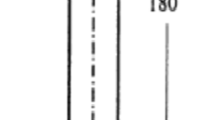Abstract
The demand of polymers has been increasing over the past decade, due to their specific properties. This large use leads mechanical engineers to study material damage problems. Partial or total ruptures resulting from these problems frequently cause accidents. Unfortunately, such incidents occur frequently due to insufficient understanding of the operating conditions or the types of damage. This paper presents the impact of strain rate on the damage of chlorinated polyvinyl chloride compounds. Tensile tests were conducted on the samples at room temperature with three strain rates (5, 50, and 500 mm/min). The results of the tests are used to develop two damage models for this polymer: the first one generated through static damage and the second one acquired via the use of unified theory. Both models are constructed on the concept of stress. The results clearly obtained from these two models enable us to describe the mechanical comportment of chlorinated polyvinyl chloride and to forecast how the damage will develop. Moreover, three stages of damage are identified to assist predictive maintenance in defining the material CPVC’s safety and maintenance intervals.






Similar content being viewed by others
Data availability
The datasets used and/or analyzed during the present study are available from the corresponding author on reasonable request.
References
Amjadi M, Fatemi A (2020) Tensile behavior of high-density polyethylene including the effects of processing technique, thickness, temperature, and strain rate. Polymers 12:1857
Ayadi W, Laiarinandrasana L, Saı K (2018) Anisotropic (continuum damage mechanics)-based multi-mechanism model for semi-crystalline polymer. Int J Damage Mech 27(3):357–386
Banks-Sills L, Shiber DG, Fourman V, Eliasi R, Shlayer A (2016) Experimental determination of mechanical properties of PMMA reinforced with functionalized CNTs. Compos Part B Eng 95:335–345
Bassir Y, Wahid A, Kartouni A, Chakirb H, ELghorba M (2021) Comparative study of the service life of a central core and a helical strand constituting the same rope. Engin Struc 247:113148
Bathias, C., Bailon, J., 1980. The fatigue of materials and structures. 328-330.
Bouvard JL, Denton B, Freire L, Horstemeyer MF (2016) Modeling the mechanical behavior and impact properties of polypropylene and copolymer polypropylene. J Polym Res 23:70
Chen G, Yang Y, Kang D, Qin Q, Jin J, Shao H, Qin S (2021) Enhanced performances of chlorinated polyvinyl chloride (CPVC) ultrafiltration membranes by styrene-maleic anhydride copolymer. Sep Purification Techno 258:258–108043
En-Naji A, Mouhib N, Lahlou M, Farid H, El Ghorba M (2019) Change of experimental Young’s modulus with increasing temperature for an abs material subjected to tensile test. ARPN J Engin Appl Sci 14:3
Faust DR, Wooten KJ, Smith PN (2017) Transfer of phthalates from c-polyvinyl chloride and cross-linked polyethylene pipe (PEX-b) into drinking water. Wat Supp 17(2):588–596
Hack M (2019) Multi-scale methods in simulation—a path to a better understanding of the behaviour of structures, multi-scale simulation of composite materials. In: Mathematical Engineering. Springer, Berlin, Heidelberg, pp 1–13
Hitt DJ, Gilbert M (1992) Tensile properties of PVC at elevated temperatures. Mater Sci Technol 8:739–744
Lin Y, Chao-Ting Y, Yiu-Wing M (2004) Effects of rate and temperature on fracture behavior of TPX polymer. Polym Compos 19(6):830–836
Liu J, Su Y, Peng J, Zhao X, Zhang Y, Dong Y, Jiang Z (2012) Preparation and performance of antifouling PVC/CPVC blend ultrafiltration membranes. Ind Eng Chem Res 51(24):8308–8314
Majid F, Ouardi A, Barakat M, Elghorba M (2017) Mechanical behavior prediction of PPR and HDPE polymers through newly developed nonlinear damage-reliability models. Procedia Struct Integr 3:387–394
Merah N, Irfan-ul-Haq M, Khana Z (2003) Temperature and weld-line effects on mechanical properties of CPVC. J Mater Pr Tech 142:247–255
Merdaci S, Belghoul H, Hadj MA (2019) Mechanical traction tests of different types of materials steel-copper-brass-aluminum. Int J Eng Res Technol 5(3):59–65
Sabah F, Wahid A, Nassih F, El Ghorba M, Chakir H (2019) Prediction of the lifetime of acrylonitrile butadiene styrene (ABS), by calculation of damage by two methods: damage based on residual stresses and damage by stages evolution. Key Engineering Materials 820:203–211
Wahid A, Mouhib N, Ouardi A, Sabah F, Chakir H, EL Ghorba M (2019) Experimental prediction of wire rope damage by energy method. Engin Stru 201:109794
Author information
Authors and Affiliations
Contributions
Abderrahim Khtibari and Abdelkrim Kartouni contributed to the conception and design. Material preparation, data collection, and analysis were performed by Abderrahim Khtibari, Said El Ouahbi, Abderrazak En-Naji, Abdelkrim Kartouni, and Mohamed El Ghorba. The first draft of the manuscript was written by Abderrahim Khtibari, and all authors commented on previous versions of the manuscript. All authors read and approved the final manuscript.
Corresponding author
Ethics declarations
Ethics approval
This is not applicable.
Consent for participate
Not applicable.
Consent for publication
Not applicable.
Conflict of interest
The authors declare no competing interests.
Additional information
Responsible Editor: Philippe Garrigues
Publisher’s note
Springer Nature remains neutral with regard to jurisdictional claims in published maps and institutional affiliations.
Rights and permissions
Springer Nature or its licensor (e.g. a society or other partner) holds exclusive rights to this article under a publishing agreement with the author(s) or other rightsholder(s); author self-archiving of the accepted manuscript version of this article is solely governed by the terms of such publishing agreement and applicable law.
About this article
Cite this article
Khtibari, A., El Ouahbi, S., En-Naji, A. et al. At room temperature, the impact of strain rates on the damage of CVPC compound. Environ Sci Pollut Res (2023). https://doi.org/10.1007/s11356-023-27155-2
Received:
Accepted:
Published:
DOI: https://doi.org/10.1007/s11356-023-27155-2




